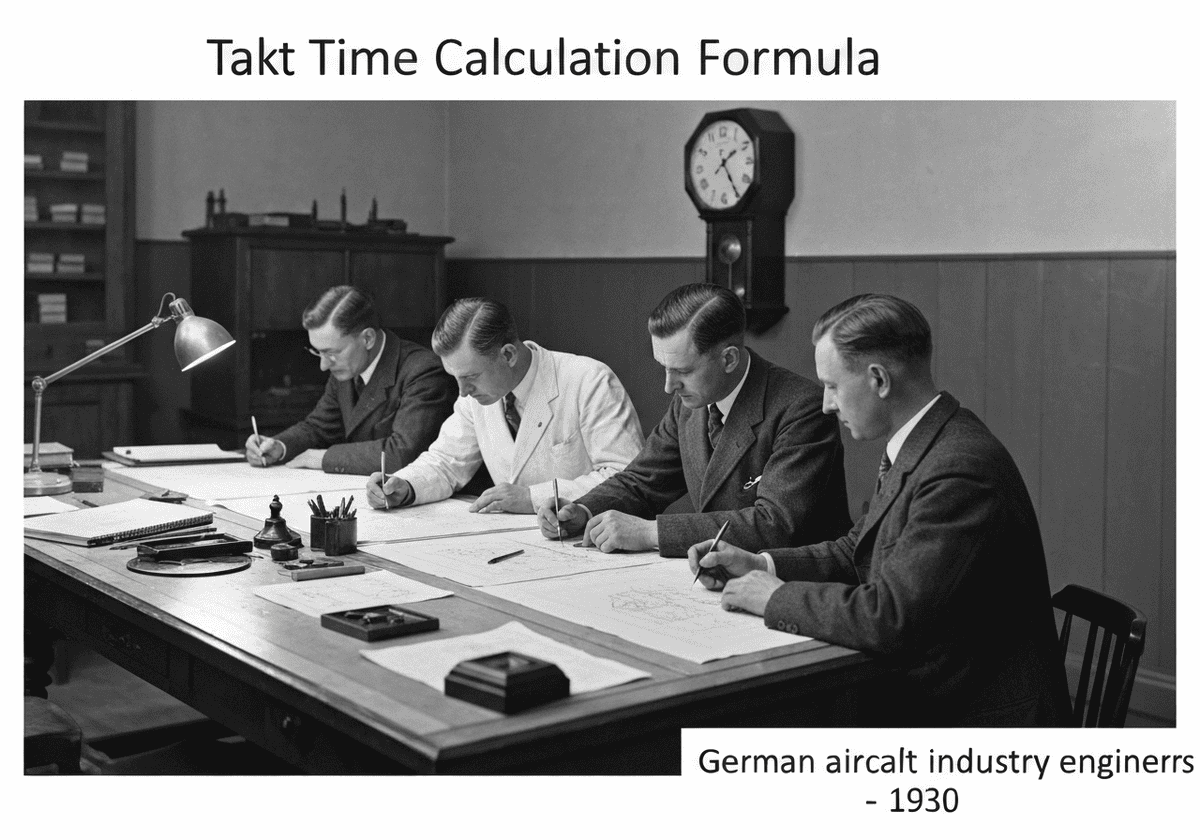生产间隔时间(Takt time)是指为满足客户需求而生产产品所需的最长时间。它的计算方法是用净可用生产时间除以该时间段内的客户需求量。计算公式为:[latex]T = \frac{T_a}{D}[/latex],其中,T 为工时,Ta 为净可用时间,D 为客户需求。


(generate image for illustration only)
生产间隔时间(Takt time)是指为满足客户需求而生产产品所需的最长时间。它的计算方法是用净可用生产时间除以该时间段内的客户需求量。计算公式为:[latex]T = \frac{T_a}{D}[/latex],其中,T 为工时,Ta 为净可用时间,D 为客户需求。
The Takt time formula, [latex]T = \frac{T_a}{D}[/latex], is a cornerstone of lean production systems. Its components must be carefully defined for an accurate calculation. ‘Net Available Time’ ([latex]T_a[/latex]) is not simply the total shift time; it is the time that is genuinely available for production. This means subtracting planned stops such as breaks, team meetings, and scheduled maintenance. Unplanned downtime is typically not subtracted from Ta, as its occurrence is a problem to be solved, and including it would artificially inflate the Takt time, masking the underlying issue. ‘Customer Demand’ (D) refers to the number of units the customer requires within the specified time period. This figure should be based on actual sales or orders, not production forecasts, to ensure the system is truly pulled by the customer.
The result of the calculation is a unit of time per piece (e.g., seconds per unit). This value represents the heartbeat of the production system. Every 工作站 in the production process is then designed and balanced to complete its tasks within this time. If a station’s cycle time exceeds the Takt time, it becomes a bottleneck, unable to keep up with customer demand. Conversely, a cycle time significantly below the Takt time indicates excess capacity, which can lead to overproduction, a primary form of waste in lean philosophy. Therefore, the formula provides a clear, objective target for process design and continuous improvement activities.
迎接新挑战
机械工程师、项目、工艺工程师或研发经理
可在短时间内接受新的挑战。
通过 LinkedIn 联系我
塑料金属电子集成、成本设计、GMP、人体工程学、中高容量设备和耗材、精益制造、受监管行业、CE 和 FDA、CAD、Solidworks、精益西格玛黑带、医疗 ISO 13485
节拍时间计算公式
(如果日期不详或不相关,例如 "流体力学",则对其显著出现的时间作了四舍五入的估计)。
相关发明、创新和技术原理
{{标题}}
{%,如果摘录 %}{{ 摘录 | truncatewords:55 }}
{% endif %}